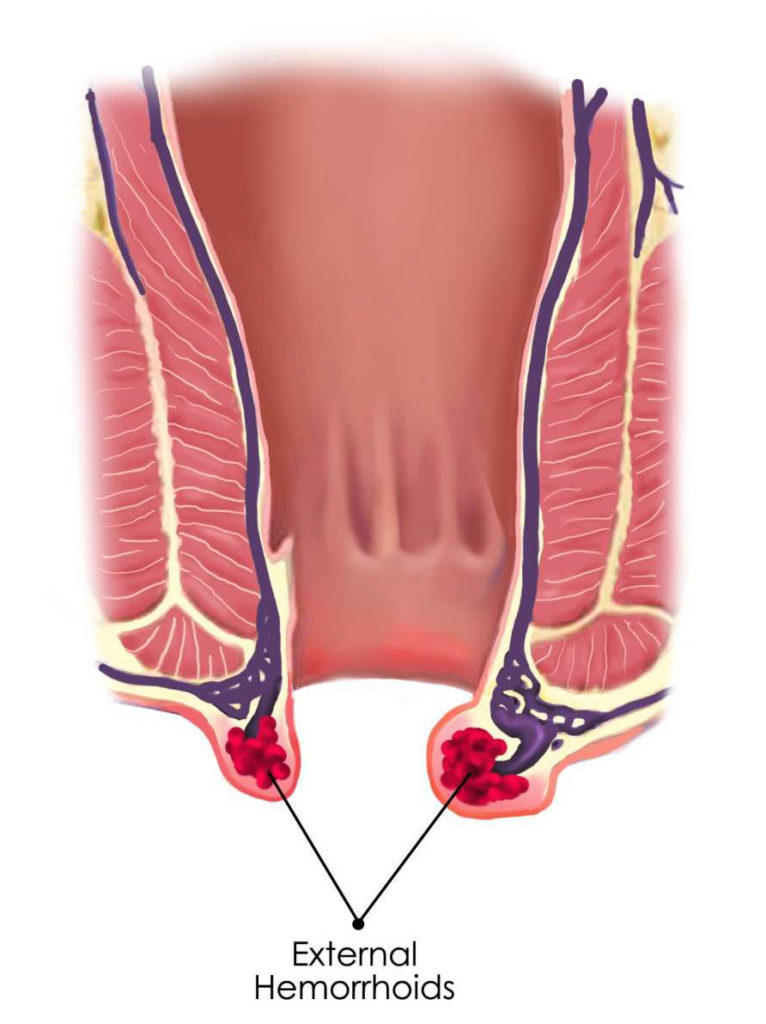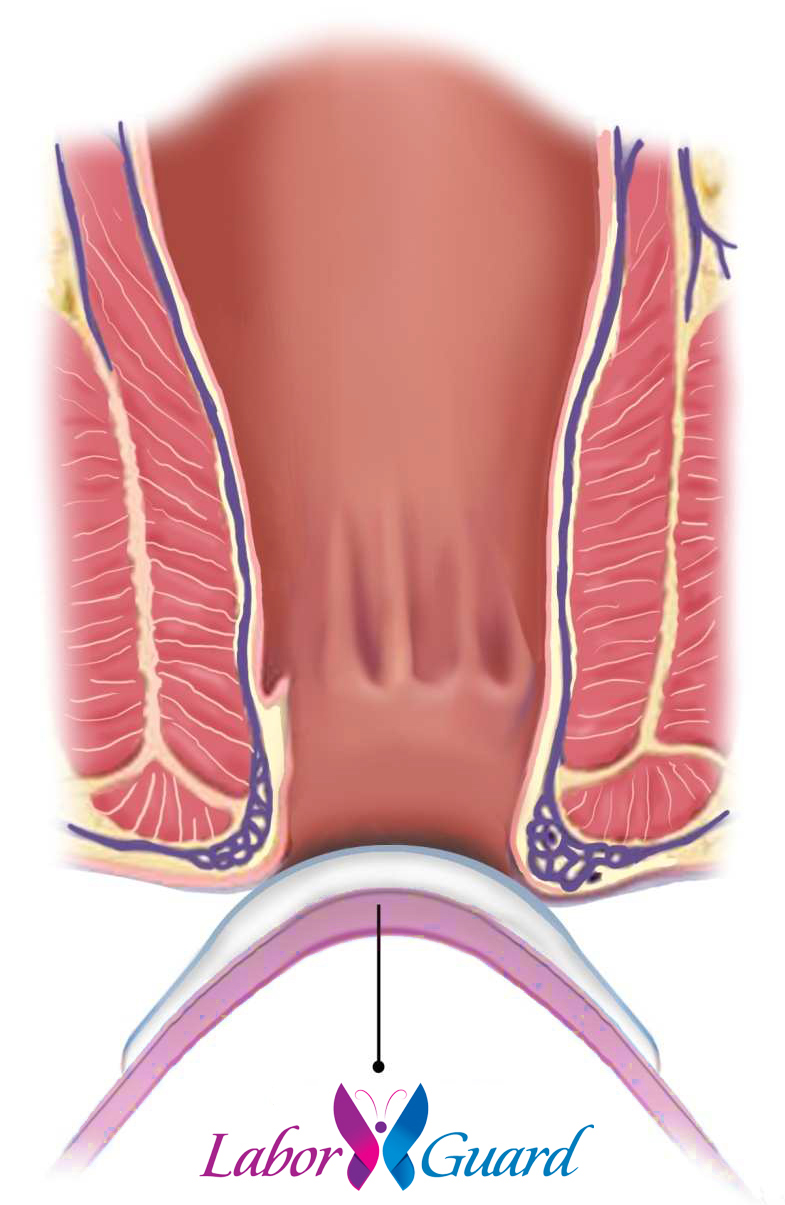How The Labor Guard® Device Works
Hemorrhoids during pregnancy may lead to hemorrhoids during delivery. During the transition phase of labor, the non-invasive Labor Guard® device is applied externally directly over the anus and perianal tissue. Mild counter-pressure force is applied by the caregiver and the device is secured in place.
As the patient pushes and the baby’s head and shoulders breach the birth canal, the Labor Guard® provides support to the perianal tissue. The absence of this external, counter pressure support frequently allows perianal tissue to overextend and engorge with blood – a condition that increases the susceptibility to hemorrhoids. The presence of this counter force to perianal tissue is also clinically proven to help reduce the likelihood of Cesarean delivery during vaginal childbirth.
The following illustrations feature external hemorrhoids and how the Labor Guard® device provides external support to the rectal venus plexus area to help prevent external hemorrhoids from childbirth.

During labor and delivery, without the Labor Guard® device, the anus overextends and engorges with blood, causing external hemorrhoids.

The Labor Guard® device keeps the anus from overextending and gorging with blood, preventing external hemorrhoids from developing during childbirth.

